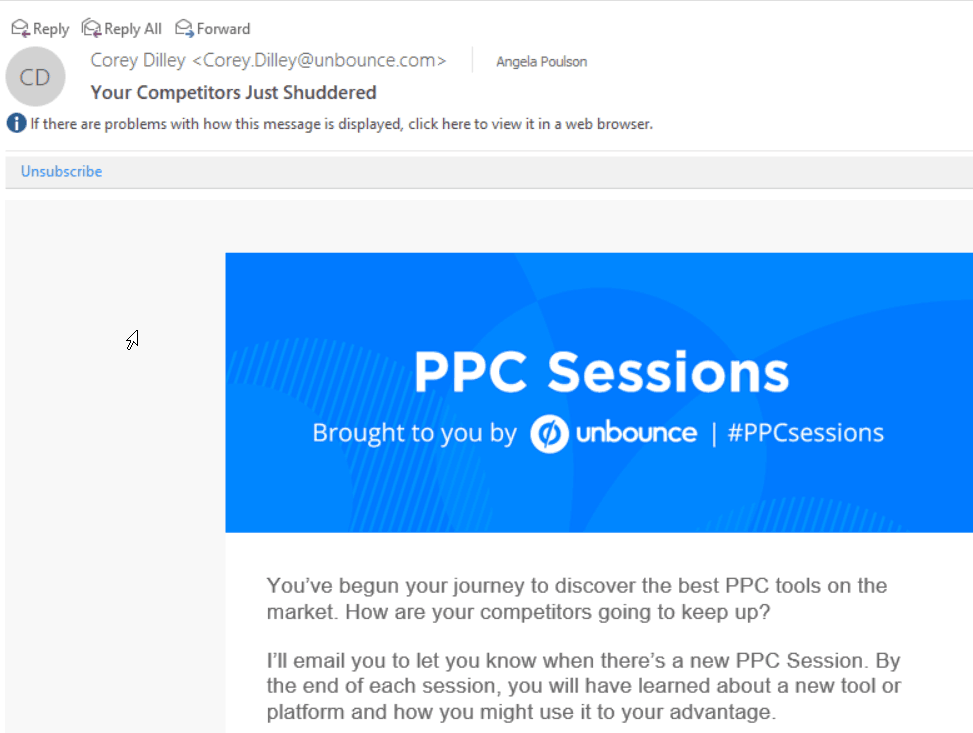B2B marketing copy tends to be logical, educational and formal. This makes sense because an estimated 50-80% of online search queries are informational. This sort of content is great for establishing your company as a thought leader, which puts you into an ideal competitive position when your followers are ready to buy.
But logic alone can’t always get you the mindshare you need to get your ideas and information out there in the first place. There is so much competition for a person’s attention in the information age that it’s difficult to get people to pay any attention at all to your content marketing, let alone begin to engage with you on a deeper level.
Lately, I’ve seen more humor being leveraged in B2B marketing. In my experience, humor isn’t normally part of most B2B organizations’ marketing strategy, but I’m starting to wonder if this sort of emotional approach to marketing can address some of modern B2B marketers’ most pressing challenges.
According to Jonathan Kahn, co-founder at creative agency JM Consulting, the emotional impact of an advertising campaign should be carefully considered whether you’re marketing directly to end-users or to corporations. “In both, the end-user is a human being, and in the end all human beings are emotionally driven, whether they’re a CEO, marketing assistant, or developer.”
Using humor to grab attention works particularly well in B2B, since many of your competitors’ campaigns will have a formal tone. This helps you to stand out, just as the email I recently received from Unbounce (see right) stood out in my own inbox.
The email, which I received after signing up for a webinar series, had this subject line: “Your Competitors Just Shuddered,” both making me laugh and reminding me why I had engaged with them in the first place (to become a better marketer). Considering this subject line is only four words long, it accomplishes a lot.
Humor can also be used to invite a B2B prospect to focus on a pain point you can solve for them, while also providing some much-needed comic relief. This “Marketing vs. Sales” video from Lattice is the perfect example – it reminds viewers of the disconnect between their own sales and marketing teams and shows them that Lattice understands that disconnect, all while keeping the tone upbeat.
Like any other marketing tool, though, humor’s effectiveness depends on how you use it. Here are five tips for using wit to win over your B2B customers:
- Mix it up.
Humor makes sense in top-of-funnel campaigns, helping to grow brand awareness. Further down the funnel, though, a more informational approach is required for competitive differentiation and thought leadership building, so mix it up. Brian Millar, CEO and founder of the Emotional Intelligence Agency, shared the results of a 5,000-consumer study with Content Strategist. It found that “emotionally resonant online content falls into one of four buckets: inspiring, useful, funny, or beautiful” and that “the most successful brands win by using a mix of all four types.”
- Keep it positive.
According to Kerry Jones at Fractl, which did a study of 759 marketing campaigns, emotionally resonant campaigns were significantly more likely to yield a high volume of media placements and social shares vs. non-emotional content. This effect was magnified for optimistic or uplifting content: “Creating a purely positive emotional reaction works best for garnering attention and igniting shares,” Jones says. “Why is this? People want to share things that make others feel good.”
- If you’re going to make fun of someone, make fun of yourself.
Leaders who are willing to laugh at themselves and who use self-deprecating humor reduce the professional distance between themselves and their subordinates, setting the stage for closer and more positive relationships. Making fun of others, though, even in the name of playfulness, can generate negative emotions, so forms of humor such as sarcasm and cynicism should be used with extreme caution.
- Stay away from sensitive subjects.
If you tell a sexist, racist or otherwise insensitive joke, it doesn’t matter that you’re just trying to be funny. For anyone who doesn’t see the humor, you risk making yourself look unprofessional at best, or at worst, landing yourself in the middle of a public controversy.
- Don’t forget to test.
Humor is pretty subjective. Unless you measure results, you’ll never know whether your comical campaigns are effective. If you do measure, you may discover unexpected insights into your audience. Most people aren’t naturally funny – they have to work at it, so if you’re planning to use humor in your marketing, know that you’ll need to hone your skills and make careful adjustments over time as you learn what resonates.
When it comes to examples of professional playfulness, I’m a bit of a collector. If you’ve seen interesting examples of marketing humor lately, please do share.


